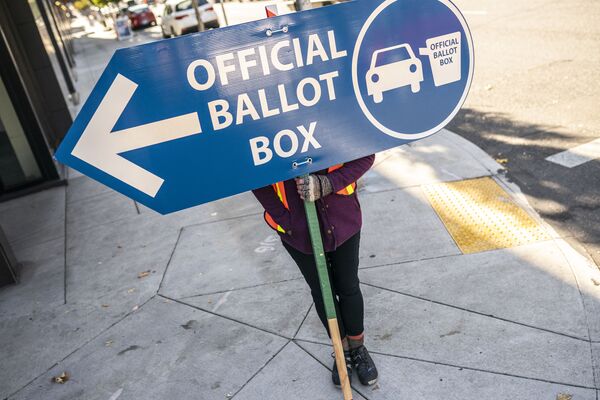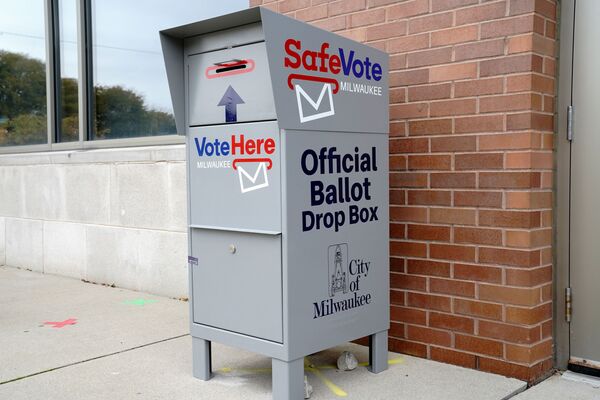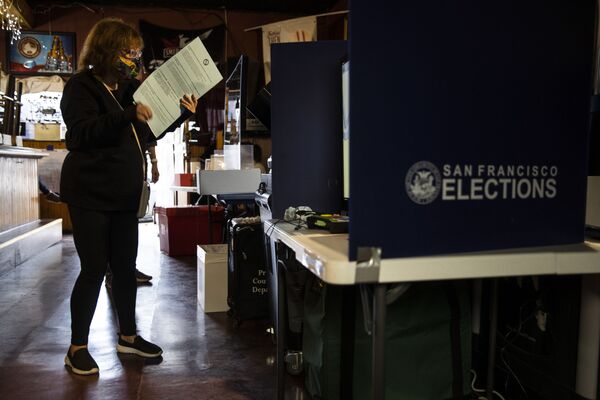As polls closed across the US on Election Day and the first results of vote tallies began coming in, experts dashed potential hopes for a swift announcement of the winner in the race for the White House.
The current vote count shows that Democrat Joe Biden has secured 238 Electoral College votes against current incumbent, Republican Donald Trump’s 213, with 270 required to claim victory.
However, millions of votes in key battleground states could take a while to count, with the process potentially dragging on for days.

The crucial battleground states of Pennsylvania, Michigan, Georgia, North Carolina, and Wisconsin were all too close to call at this stage, claim election experts.
The current US presidential election is unfolding against the backdrop of unusual circumstances, as the COVID-19 pandemic threw a spanner in the works of the established process.
Americans won’t know the winner of the 2020 US presidential election until well into Wednesday, or even later, writes AP.
Amid the raging COVID-19 pandemic and the restrictions set in place to try and curb its spread, many states opted to make it easier to request a mail-in ballot.
Voters embraced the option, driven by concerns for their health at crowded polling stations. However, mail ballots generally are time-consuming to process, as they must be verified against registration information.
Snail Vote?
Different states, however, found themselves differently positioned to deal with the challenging circumstances.
Some states have had extensive experience in using mail-in ballots, and didn’t require as much adjustment as others.

The easiest way states could hasten the tabulation is by beginning to process or even count mailed ballots before Election Day.
This was the option that several states went with.
In Florida, which has a long history of handling mail ballots and a significant in-person early vote, clerks can start counting ballots 22 days before an election. Thus, the state tends to get its count done relatively swiftly.
In North Carolina, which has a particularly large amount of in-person early votes, a prompt tabulation on Election Day is explained by county boards processing mailed ballots and placing approved ballots in voting machines starting in late September.
While the actual count doesn’t start until Election Day, many are thus ready to be processed and counted quickly.
In other areas, such as swing states Michigan, Pennsylvania and Wisconsin, Republican-led legislatures decided against changing state law to allow this.

Throughout his campaign, Republican President Donald Trump has complained about mail-in ballots’ alleged vulnerability to fraud, and slamming the procedure as a “disaster”.
To complicate matters further, some states will eventually count votes that haven’t even arrived on election night because they’re still in the mail.
While no state will count mail votes that are postmarked after Election Day, many states have a deadline of counting only mailed ballots that arrive on or before Election Day. This applies to Florida, Arizona, Michigan, and Wisconsin.
In others states, as long as a ballot is postmarked by Election Day or before, it can be counted.
Pennsylvania plans to count ballots arriving up to three days after Election Day; North Carolina will count ballots arriving up to nine days after the election, and Ohio will count ballots received up to 10 days after. These states are anticipated to offer up a trickle late-arriving mail votes post-Election Day.
Polls carried out on the eve of 3 November suggested that a majority of Trump’s supporters intended to arrive at polling stations to cast their ballot on Election Day, while more than half of Joe Biden’s supporters planned to vote by mail.

Early on Wednesday, Trump, who is in a neck-and-neck race with Democrat Joe Biden, said he might take the election to the US Supreme Court to dispute the counting of votes.
"We did win this election. This is a fraud on the American public,” said Trump said in a speech from the White House.
The US president appeared to refer to the counting of mail-in ballots which can be legally accepted by state election boards after Tuesday's election, provided they were sent in time.
Amid the coronavirus-induced health crisis, a record number of ballots were cast before Election Day, totaling more than 100 million.


